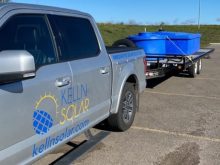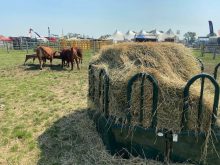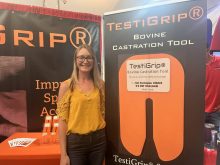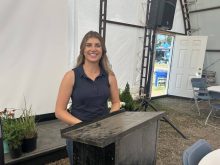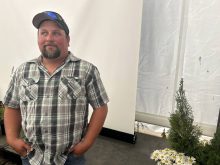Virtual fencing was one innovation discussed at the Livestock AgTech Happy Hour on the last day of Ag in Motion.
Andre Bonneau, a Range Management Extension Specialist with the Government of Saskatchewan, spoke about technology that’s being tried in Saskatchewan regarding virtual fencing.
A pilot project of the virtual fencing company known as Vence is underway on the ranch of John and Deanne Chuiko in northern Saskatchewan. The Chuiko’s run CJ Ranching near St. Walburg, Sask.
“Up in St. Walburg, they’ve been having really good luck,” Bonneau said of the project.
Read Also

JBS profit falls amid still-challenging US market environment
JBS, the world’s largest meat company, reported a net profit fall in the third quarter in spite of a rise in global net sales amid a still-challenging beef market environment in the U.S., according to an earnings statement on Thursday.
Vence consists elements such as a base station and the virtual fencing collars. The base station, or a LoRaWAN transmitter, covers 5,000 to 10,000 acres, depending on the terrain. The collars that are worn by the cattle transmit to the station, which then transmits to the rancher’s phone.
Bonneau said this is preferable to something like a SIM card because of the cost. While base stations are around $10,000 to $12,000, the collars would be more expensive than they are now if a sim card was used. The collars are rented and the stations are bought, though they can be split between multiple people.
“If you have 250 Cows, 250 SIM cards, that’s a lot to stay on top of,” Bonneau said. “If all you have to do is send a signal to the LoRaWAN receiver convert that to… whatever signal they use, and then send that to Ottawa or Washington or Regina. We’d cut that cost.”
The Chuiko’s have three base stations and around 200 collars they are using on their cattle.
Bonneau said the cattle are trained over the course of a week to respond to the signals of the collar, and then there are few issues after that. He said there have been some issues with retention of the collars, as a few have broken. The solar storms of early June also affected them.
The cost of the base station may also be too expensive for many producers.
He said a benefit, though, is that there is a tech person assigned to each operation. There’s someone to deal with your issues whenever need who knows the history of the operation. He also said he expects some of these bugs to be worked out over the course of the trial, which is two years long.
Bonneau said he expects to see technology like this become more common in Saskatchewan.
“Every time the price of canola goes up, we’re losing hay fields. It’s getting tighter and tighter,” Bonneau said.
“There’s some concern in the ministry that…if we get too many drought years, we’re gonna lose a lot of the capacity of maintaining cattle. With the system or any system like it, now we can start using pastures that we weren’t able to use efficiently before.”






